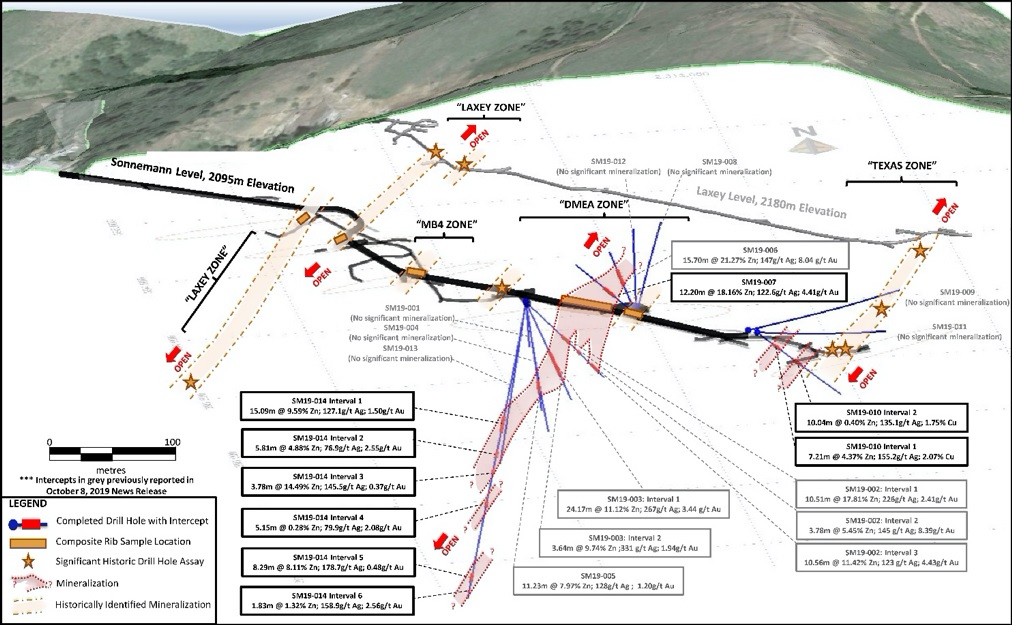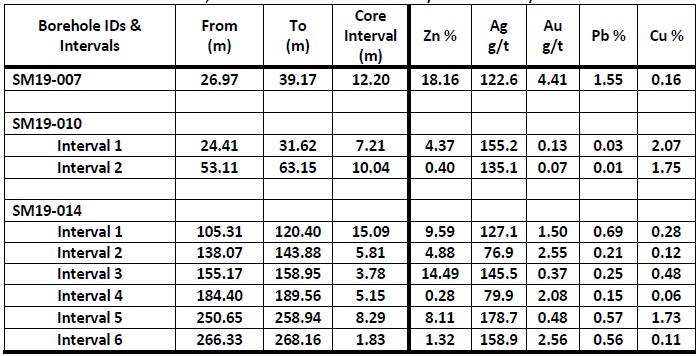
BeMetals (BMET.V) has released the assay results from three holes that were drilled as part of the first underground drill program the company has conducted on its South Mountain project in Idaho. All three holes that were reported on (7, 10 and 14) intersected mineralization that appears to be very viable at the current metal prices.
Hole 10 appeared to be the ‘weakest’ hole but with 7.2 meters containing 4.4% ZnPb, 2.07% copper (surprisingly high) and almost 5 ounces of silver per tonne of rock, the gross rock value of this interval still is around US$300/t so even if the average recovery and payability percentage would be around 50%. Just to be clear, we expect it to be higher but this will depend on the types of concentrate BeMetals plans to produce as a separate zinc and lead concentrate would have higher average payability percentages than producing a bulk concentrate, but the capex for a processing plant to get to a bulk concentrate would be lower than putting in the systems to have two separate concentrates. That’s why it will be important to figure out the total size of the South Mountain project: the higher the tonnage, the more sense it would make to look into the possibility to produce two concentrates. The lower the tonnage, the more likely it will be to limit the scope of the economics to producing a bulk concentrate.

And yes, hole 10 with a gross rock value of $300/t was the weakest set of holes. Hole 7 encountered 12.2 meters containing almost 20% ZnPb, almost 4 ounces of silver per tonne, 4.4 g/t gold and traces of copper (0.16%) and has a gross rock value of around US$700/t while hole 14 was perhaps the most intriguing hole of the three BeMetals has now reported on, as that hole intersected three separate layers of mineralization, and all of them appear to be viable: in some cases the base metals grades are a bit on the lower side, but that’s made up for by a higher gold content which keeps the rock value per tonne at relatively high levels. Hole 14, with the three separate layers of mineralization, also is the deepest hole on the property that has intersected mineralization so far. And it sounds like BeMetals expects the mineralization to continue at depth as it specifically mentioned the hole was terminated as the maximum capacity of the underground drill rig had been reached.
The initial 20 hole drill program (for a total of 2,250 meters) has now been completed, and the assay results should continue to roll in over the next few weeks. Once all results will have been received (and interpreted), BeMetals will design a follow-up drill program for 2020.
Disclosure: The author has a long position in BeMetals.

